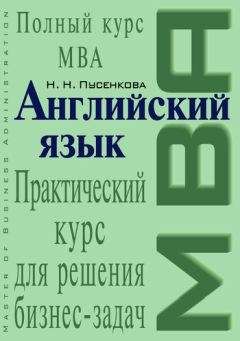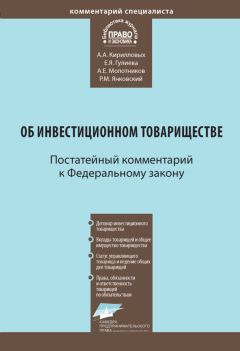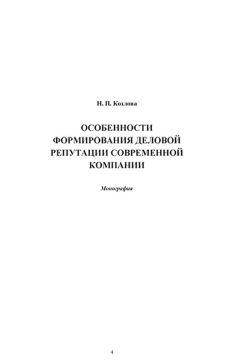Ознакомительная версия.
Not all long movements in the market can be characterized as bull or bear: sometimes a market may go through a period of……. as it tries to find direction. In this case, a series of up and downward movements would actually cancel out gains and losses resulting in a…… market trend.
Source: www.investopedia.com, October 3, 2003 (excerpt)
Terms:
drives, decisions, employment, flat, trend, buy, appreciating, stagnation, fixed income, record, downward, supply, profit, consumers, multiple, individuals, exchanges, performance, depreciating, determine, reversal, attitudes, determinant, bull, trading, uptrend, economy, bear, laying, stock, demand, share, sell, fundamental, equities, confidence, decline, valuates, correction, tendency
Exercise 5. Translate into English.
Обзор рынка: Слово премьера
В среду после заявления премьер-министра Владимира Путина о планируемых налоговых льготах для стимулирования нефтедобычи нефтяные бумаги сразу выросли на 5%, вспоминает ведущий аналитик ГК «Регион» Константин Гуляев. Хотя котировки нефти Brent в течение дня снизились до уровня $123, акции «Сургутнефтегаза» на ММВБ выросли на 10,7%, «Газпром нефти» – на 8,1%, «Роснефти» – на 6,2%, «Транснефти» – на 6%, «Лукойла» – на 5,4%, «Татнефти» – на 3,7%. Акции «Газпрома» поднялись на 2,8% – по мнению Гуляева, здесь сыграла роль передача компании без конкурса месторождений с запасами порядка 3 трлн куб. м газа из фонда стратегических месторождений.
Гуляев считает, что рынок также подогрела статистика по росту потребительских цен в США за апрель, оказавшаяся лучше ожиданий: 0,2% против 0,3%. А Freddie Mac за I квартал показала убыток в $151 млн, т. е. существенно меньше прогнозов. В результате индекс ММВБ вырос на 3,5% до 1904,2 пункта, превысив уровень закрытия 2007 г., а индекс РТС вырос на 6,9% до очередного исторического максимума в 2406 пунктов.
Акции «Уралкалия» на ММВБ выросли на 3,4%, «Норникеля» – на 2,6%. Во втором эшелоне обыкновенные акции «Ленэнерго» подорожали на 12,5%, «Омскэнергосбыта» – на 11,2%, Волжской ТГК – на 10,6%. Тем не менее, по мнению начальника аналитического отдела компании «Атон» Андрея Верникова, рынок все еще перегрет и есть риск снижения индекса РТС до уровня поддержки 2290—2250.
По словам начальника управления конверсионных и межбанковских операций банка «Зенит» Александра Карпова, на международном рынке наблюдалась высокая волатильность курса доллара в диапазоне $1,54-1,55/евро, на российских же площадках доллар вырос с 23,81—23,82 руб./$ до 23,91 руб./$, т. е. превысил уровень поддержки ЦБ примерно на 0,12 руб. Как полагает Карпов, спекулянты, продававшие большие объемы долларов Центробанку в апреле, решили частично закрыть короткие позиции. Ставки по однодневным кредитам не превышали 4% годовых.
Источник: Ведомости, 15.05.08
Lesson 33
Valuation of Russian Companies
Read and translate the text and learn terms from the Essential Vocabulary.
Figure 1. Renaissance Capital Stock Focus List
Recap of Stock/Sector Performance Year-to-Date
Driven by the ever growing domestic liquidity, the Russian stock market has risen strongly over the year, gaining 26%. The top performers in 2003, similar to in 2002, were second– or even third-tier stocks. The only two «blue chips» to feature in the top 20 best performing companies – Mosenergo and UES – almost doubled in value year-to-date (this is a stark reversal of the situation in 2002 when each of these stocks lost about 25%). 75% of the top 20 best performing stocks come from the utilities sector, implying that the game for control of the sector, which started in 2002, is still on.
Figure 2. The Best Performing Russian Stocks in 2003 Year-to-Date
The list of the worst performing stocks has 4 utilities firms in 2003, but otherwise it is a more diverse group and contains a number of larger companies. Beer stocks were clearly out of favor with investors, with SUN Interbrew falling almost 40%, and Baltika down 10%. Despite the strong rally in the telecoms sector as a whole, two stocks – Far East Telecom and North-West Telecom – lagged behind their peers.
Sector performance is something of a misnomer, as several are comprised of just one or two companies, while others include common and preferred shares, which often distort the overall picture. The banking sector (that is, Sberbank), which was the best performer in Russia in 2002, managed to clinch the second spot in 2003 year-to-date. The utilities sector, which was the only sector that finished down year-on-year in 2002, was the best performing one year-to-date, helped by hefty increases in UES and Mosenergo shares. At the other end of the spectrum were the airlines, and the retail and consumer stocks (led down by SUN Interbrew’s and Baltika’s poor performances).
Figure 3. The Worst Performing Russian Stocks in 2003 Year-to-Date
Finally, all top 20 stocks, except Baltika, have increased in value since the beginning of the year. UES moved up from the middle of the table at the beginning of 2003 to become the 5th largest stock. Following a strong rally in the telecom sector, 6 of the top 20 Russian stocks were telecom companies.
Figure 4. Performance of the Top Russian Stocks in 2003 Year-to-Date
On the Valuation of Russian Equities
Valuation represents only one side of the multilayered decision process behind choosing a stock. Other tangible and less tangible issues, such as, for example, the existence of the earnings momentum, sensitivity to newsflow, and the quality of management, play important roles behind the selection process. Such intangibles have traditionally held more weight in emerging market investment criteria than in developed ones, and continue to do so. This argument naturally pertains to Russia as well, and we argue that valuations can also incorporate intangible considerations.
The RTS is trading at a 2003 P/E of 6.8x, which albeit some 15% higher than at the beginning of the year, still compares favourably with other developing markets. We now take a look at sectors and individual stocks within the Russian investment universe.
The easiest multiple to use is EV/Sales. It is also the least useful of the multiples – the company may have an attractive multiple on a standalone basis, or on a growth-adjusted basis, but nothing would tell us if the company is actually profitable or if it is losing money. One way of avoiding this problem is to compare EV/Sales and Net Margin – clearly the companies with low multiples and high margins are attractive on this scale. Some of the automakers are trading at the lowest multiples, but many of them do not show growth and have low net income margins. Telecom stocks are trading on high multiples, but they are also expected to post the fastest growth and their profit margins are above 15%.
Admittedly, EV/EBITDA is also not the best multiple upon which to focus, taking no consideration, for example, of either taxes or capex. However, given ongoing differences in the reporting standards of Russian companies, EBITDA is frequently the line below which a lot of things go fuzzy. For instance, the Russian Accounting Standards (RAS) – still used by most companies, apart from blue chip stocks with ADRs – treat net income in a very different way from the U.S. GAAP and IAS. It is entirely normal to make social contributions, pay bonuses to employees, or divert funds elsewhere from whatever is called the net income under RAS, and hence RAS reported net income usually shrinks substantially when converted into GAAP figures.
The EBITDA line tends to be less distorted by accounting differences and thus our first step is to focus on it. The average Russian 2003 EV/EBITDA has somewhat increased over the past 5 months and is now about 3.8x, as opposed to 3.2x in January. There are a number of companies, which trade at a substantial discount even to this already low number. However, in most cases, there is a good reason for this – either growth is not there, or the risks are too high. For instance, although many utilities companies are trading at or below 2x EV/EBITDA, the growth is on the low side, but the risks are on the high side. Retailer TsUM shows one of the most impressive growth profiles (37% CAGR in EBITDA), and is also trading at a discount to the average. However, TsUM’s 19%+ weighted average cost of capital (WACC) is substantially above the average, and we are uncertain about its long-term strategy.
PAZ, Wimm-Bill-Dann, Norilsk Nickel, and Baltika are the companies, which, in our view, look appealing on an EV/EBITDA valuation basis, factoring in growth.
TsUM also shows up well on the EV/CF valuation sheet, followed by PAZ. Valuations of Vympelkom, Wimm-Bill-Dann, and Volga Telecom also look quite attractive, once growth is factored in. Tatneft and Surgutneftegas are two of the cheaper stocks by this measure, but there is no growth in Tatneft, while Surgut is no longer trading on fundamentals.
The P/E valuation also highlights the automotive and utilities stocks, and Sberbank, as some of the more attractively valued shares. MTS, Vympelkom, and Wimm-Bill-Dann also look good on growth adjusted measures, albeit that they are trading above the average of 6.8x.
The return on capital employed (ROCE) valuation, which, at least in theory, incorporates all cash items – including taxes, company indebtedness, and capital expenditure – highlights that most of the companies which have positive returns over their WACC have already traded up. Examples are easy to find – YUKOS, Baltika, MTS, Vympelkom, and Sibneft.
The companies which do have a positive spread of ROIC over WACC are LUKOIL, and Zavolzhskiy Motors, and, to a lesser degree, Mosenergo and Norilsk Nickel. While Zavolzhskiy Motors is forecast to keep its ROIC above WACC for the next two years, LUKOIL’s economic returns are forecast to deteriorate in 2004, while those of Norilsk Nickel are expected to improve.
The International Perspective
While looking at the valuations of Russian companies internationally, it has to be borne in mind that while Russian company share prices have been going mostly up, their risk profile has been coming down, allowing more room for price appreciation. After all, valuations are meaningless before they have been compared to growth rates and risks, as measured by WACC.
The single largest change to the WACCs of Russian companies came from the significant reduction in the country risk, as measured by the basket of Eurobonds. The yields of Russian Eurobonds, both sovereign and corporate, have seen a considerable decline in the last 12 months, on average by a 3—3.5 percentage points. To a large degree, however, this is attributable to a significant decline in US dollar yields – the tightening in EMBI spreads was far less steep than the decline in yields. Also, Russian debt yields have been declining in line with peers, as emerging market debt has performed quite well in the low interest rate and low economic growth environment.
However, there are also some Russia-specific factors behind the great performance of Russian debt over the past several months. These include a significant current account surplus, forex reserves nudging the $60 billion mark, a state budget surplus, a growing economy, significantly improved political stability, and some hesitant progress in structural reforms. This is all in sharp contrast with 1997—1998, when the decline in yields was driven by foreign «hot money» rather than fundamentals. In contrast now domestic investor demand in the Eurobond market is more stable than foreign demand. For these reasons, and due to the relatively low chance of rising dollar interest rates this year, we think that Russian debt yields, however ridiculously low they might appear, are sustainable in 2003. And Russia is still trading some healthy 100 basis points (bps) wider than Mexico, which is one investment grade higher, and about 200 bps wider than Poland, which is now trading as a quasi-EU country.
As an example of corporate bonds, the yields of MTS and Vympelkom dollar debt instruments have also declined in the past year. It should be noted, though, that Vympelkom has closed the gap with MTS in terms of the cost of debt, which is due both to an improvement in Vympelkom’s financial results and MTS’ increasing leverage. MTS’ Eurobonds maturing in 2008 now probably serve as the best proxy for the cost of debt for both companies, which we would see in the tight area of around 8%.
Despite the decreasing macro risks, we do not think that there have been many changes, which would allow us to consider Russian equity as any less risky than we did previously. Legislation has not changed much, the corporate governance risks remain the same, the dealings in shares of UES and Surgutneftegas over the past six months have proved that the market remains an «insider’s» place, and the overall breadth of the market – if anything – has worsened. Thus, we do not see any reasons to decrease our six percentage point equity risk premium.
Source: Alexander Kazbegi, Renaissance Capital, Company Handbook, 2003 (excerpt).
Ознакомительная версия.





